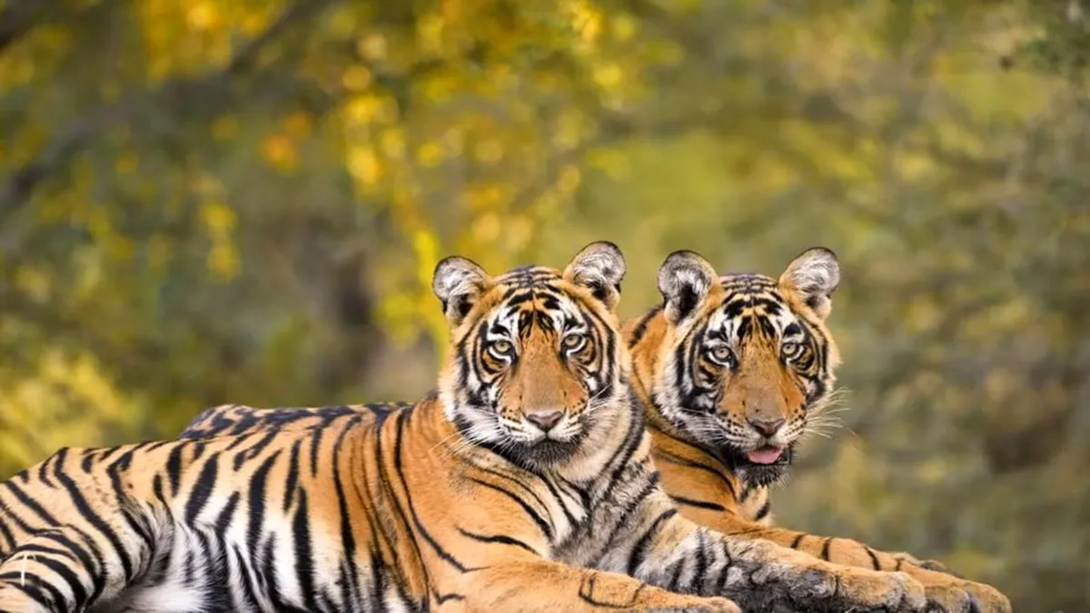- Courses
- GS Full Course 1 Year
- GS Full Course 2 Year
- GS Full Course 3 Year
- GS Full Course Till Selection
- Answer Alpha: Mains 2025 Mentorship
- MEP (Mains Enrichment Programme) Data, Facts
- Essay Target – 150+ Marks
- Online Program
- GS Recorded Course
- Polity
- Geography
- Economy
- Ancient, Medieval and Art & Culture AMAC
- Modern India, Post Independence & World History
- Environment
- Governance
- Science & Technology
- International Relations and Internal Security
- Disaster Management
- Ethics
- NCERT Current Affairs
- Indian Society and Social Issue
- NCERT- Science and Technology
- NCERT - Geography
- NCERT - Ancient History
- NCERT- World History
- NCERT Modern History
- CSAT
- 5 LAYERED ARJUNA Mentorship
- Public Administration Optional
- ABOUT US
- OUR TOPPERS
- TEST SERIES
- FREE STUDY MATERIAL
- VIDEOS
- CONTACT US
Poaching in Veerangana Durgavati Tiger Reserve
Poaching in Veerangana Durgavati Tiger Reserve
11-07-2024

Probe Launched: The Madhya Pradesh government has initiated an inquiry into alleged poaching of tigers and irregularities in the newly established Veerangana Durgavati Tiger Reserve.
Key Points:
- Background: The reserve, the seventh in the state and the 54th in India, includes areas within the Nauradehi Sanctuary and the Veerangana Durgavati Sanctuary, covering 2,339 square kilometres across three districts: Narsinghpur, Sagar, and Damoh.
- Allegations: Wildlife activist Ajay Dubey alleged "serious negligence in the conservation of tigers, tiger safari and management of forest property" in the reserve, prompting the forest department to launch the probe.
- Missing Tigers: Dubey claimed that two tigers, N-113 and N-112, along with their cubs, have been missing since 2021, and that the management falsely declared Tigress N-111 as Tigress N-112.
- Poaching Suspicions: Dubey suspected tiger poaching and sought a probe by the Central Bureau of Investigation (CBI).
- Staff and Resource Shortage: Dubey alleged a shortage of staff and resources in the reserve, which is among the sites chosen for the reintroduction of cheetahs in India.
- Illegal Tree Cutting: Dubey claimed large-scale illegal tree cutting and transportation of wood in the Bara Beat area of the Nauradehi Sanctuary, allegedly in collusion with the forest staff.
- Nauradehi Wildlife Sanctuary: The Nauradehi Wildlife Sanctuary, covering around 1,197 square kilometres, is the largest in Madhya Pradesh and a crucial corridor connecting the Panna and Satpura tiger reserves.
- Tiger Reintroduction: Tiger reintroduction efforts in the Nauradehi Sanctuary began in 2018 with the release of a pair, and the number of tigers now stands at 16, part of the Veerangana Durgavati Tiger Reserve.
- Prey and Veterinary Care: Dubey claimed that the lack of prey and veterinary care is adversely impacting the tigers in the reserve.
About Veerangana Durgavati Tiger Reserve:
Key Points:
- Location: The Veerangana Durgavati Tiger Reserve is spread across Sagar, Damoh, and Narsinghpur districts of Madhya Pradesh.
- Area: The reserve covers an expansive area of 2,339 square kilometres, encompassing areas within the Nauradehi Wildlife Sanctuary and Durgavati Wildlife Sanctuary.
- Ranking: It is the seventh tiger reserve in Madhya Pradesh.
- Naming: The reserve is named after Rani Durgavati, the queen of the Gondi people.
- Diverse Landscape: The reserve boasts a diverse landscape, featuring hills, valleys, rivers, streams, waterfalls, and grasslands.
- River Basins: The reserve straddles parts of the Narmada and Yamuna River basins.
- Historical Significance: The Singorgarh Fort is located within the reserve.
- Vegetation: The reserve has a dry deciduous type of vegetation.
- Flora: The chief floral elements include Teak, Saja, Dhaora, Ber, Amla, etc.
- Fauna: The reserve is home to a diverse range of fauna, including:
- Mammals: Tiger, leopard, wolf, jackal, Indian fox, striped hyena, Nilgai, Chinkara, Chital, Sambhar, Black Buck, Barking deer
- Primates: Common Langur, Rhesus Macaque
- Birds: Critically endangered raptors like the White-Rumped and Indian Vultures



